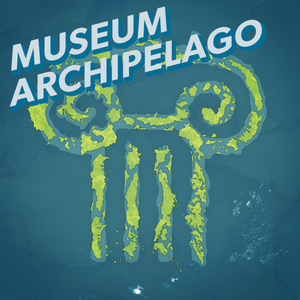
Museum Archipelago
Ian Elsner
1 Listener
All episodes
Best episodes
Top 10 Museum Archipelago Episodes
Goodpods has curated a list of the 10 best Museum Archipelago episodes, ranked by the number of listens and likes each episode have garnered from our listeners. If you are listening to Museum Archipelago for the first time, there's no better place to start than with one of these standout episodes. If you are a fan of the show, vote for your favorite Museum Archipelago episode by adding your comments to the episode page.
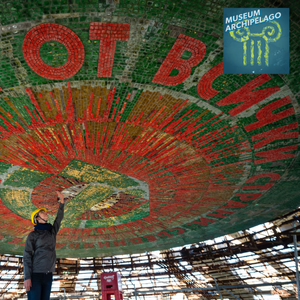
101. Buzludzha Always Centered Visitor Experience. Dora Ivanova is Using Its Structure to Create a New One.
Museum Archipelago
01/23/23 • 19 min
Since it opened in 1981 to celebrate the ruling Bulgarian Communist Party, Buzludzha has centered the visitor experience. Every detail and sightline of the enormous disk of concrete perched on a mountaintop in the middle of Bulgaria was designed to impress, to show how Bulgarian communism was the way of the future – a kind of alternate Tomorrowland in the Balkan mountains. Once inside, visitors were treated to an immersive light show, where the mosaics of Marx and Lenin and Bulgarian partisan battles were illuminated at dramatic moments during a pre-recorded narration.
But after communism fell in 1989, Buzludzha was abandoned. It was exposed to the elements, whipped by strong winds and frozen temperatures, and raided for scrap. Buzludzha has been a ruin far longer than it was a functional building, and in recent years the building has been close to collapse. Preventing this was the initial goal of Bulgarian architect Dora Ivanova and the Buzludzha Project, which she founded in 2015. Since then, Ivanova and her team have been working to recruit international conservators, stabilize the building, and fundraise for its preservation.
But Ivanova realized that protecting the building isn’t the end goal but just the first step of a much more interesting project – a space for Bulgaria to collectively reflect on its past and future, a space big enough for many experiences and many futures.
In this episode, we journey to Buzludzha, where Ivanova gives us hard hats and takes us inside the building for the first time. We retrace the original visitor experience, dive deep into various visions for transforming Buzludzha into an immersive museum, and discuss how the building will be used as a storytelling platform.
Image: Dora Ivanova by Nikolay Doychinov
Topics and Notes
- 00:00 Intro
- 00:15 Buzludzha has always centered the visitor experience.
- 01:00 “A Tomorrowland in the Balkan mountains”
- 02:40 The Original Visitor Experience
- 03:02 Dora Ivanova
- 03:15 Museum Archipelago Episode 47
- 03:35 Entering the Building
- 04:25 How to Stabilize the Roof
- 05:58 New respect for the Buzludzha thieves
- 06:25 The Inner Mosaics
- 07:26 Narrated Light and Sound Show
- 08:25 Moving from Preservation to Interpretation
- 09:34 Ivanova’s New Motivation
- 10:20 Buzludzha as a Storytelling Platform
- 11:10 How Buzludzha Was Built
- 12:30 Acting before memory becomes history
- 13:00 Buzludzha’s fate as a binary
- 14:05 The Panoramic Corridor
- 15:00 The Care For Next Generation and The Role of The Women in Our Society
- 16:02 Some Personal Thoughts about a future Buzludzha Museum
- 17:20 The preservation as proof of change
- 18:05 “Buzludzha is about change”
- 19:15 Outro | Join Club Archipelago 🏖
Museum Archipelago is a tiny show guiding you through the rocky landscape of museums. Subscribe to the podcast via Apple Podcasts, Google Podcasts, Overcast, Spotify, or even email to never miss an episode.
Support Museum Archipelago🏖️
Club Archipelago offers exclusive access to Museum Archipelago extras. It’s also a great way to support the show directly.Join the Club for just $2/month.
Your Club Archipelago membership includes:- Access to a private podcast that guides you further behind the scenes of museums. Hear interviews, observations, and reviews that don’t make it into the main show;
- Archipelago at the Movies 🎟️, a bonus bad-movie podcast exclusively featuring movies that take place at museums;
- Logo stickers, pins and other extras, mailed straight to your door;
- A w...
1 Listener
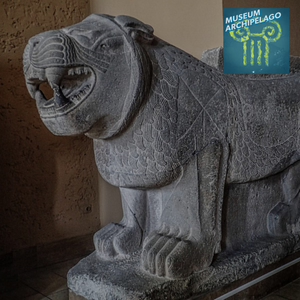
102. Copies in Museums
Museum Archipelago
07/31/23 • 14 min
On Berlin’s Museum Island, four stone lion statues perch in the Pergamon Museum. Three of these lions are originals — that is to say, lions carved from dolerite rock between the 10th and 8th centuries BCE in Samʼal (Zincirli) in southern Turkey. And one is a plaster copy made a little over 100 years ago.
Pergamon Museum curator Pinar Durgun has heard a range of negative visitor reactions to this copy — from disappointment to feeling tricked — and engages visitors to think more deeply about copies. As an archeologist and art historian, Durgun is fascinated by the cultural attitude and history of copies: the stories they tell about their creators’ values, how they can be used to keep original objects in situ, and their role in repatriation or restitution cases.
In this episode, Durgun describes the ways that museum visitors’ perception of authenticity has changed over time, how replicas jump-started museum collections in the late 19th-century, and some of the ethical implications of copies in museums.
Image: Reconstructed Lion Sculpture Sam'al near modern Zincirli Höyük, Turkey 10th-8th century BCE by Mary Harrsch
Topics and Notes
- 00:00 Intro
- 00:15 Sam’al/Zincirli Lions
- 01:09 Pinar Durgun
- 01:22 Museum Island
- 01:40 Find Divison
- 02:28 Gipsformerei
- 03:12 Replicas Jump-Started Museum Collections
- 04:35 Trending Away from Copies
- 05:27 When Visitors Feel Tricked
- 06:00 When Visitors Are Okay With Copies
- 07:28 Ancient Cultural Contexts About Copies
- 08:07 Hokusai’s Great Wave
- 08:35 “Immersive Experiences” Made Up of Digital Copies
- 09:08 Digital Copies
- 12:39 Museum Archipelago 97. Richard Nixon Hoped to Never Say These Words about Apollo 11. In A New Exhibit, He Does.
- 13:32 How Should Museums Present Copies in Their Collections?
- 14:36 Outro | Join Club Archipelago 🏖
Museum Archipelago is a tiny show guiding you through the rocky landscape of museums. Subscribe to the podcast via Apple Podcasts, Google Podcasts, Overcast, Spotify, or even email to never miss an episode.
Support Museum Archipelago🏖️
Club Archipelago offers exclusive access to Museum Archipelago extras. It’s also a great way to support the show directly.Join the Club for just $2/month.
Your Club Archipelago membership includes:- Access to a private podcast that guides you further behind the scenes of museums. Hear interviews, observations, and reviews that don’t make it into the main show;
- Archipelago at the Movies 🎟️, a bonus bad-movie podcast exclusively featuring movies that take place at museums;
- Logo stickers, pins and other extras, mailed straight to your door;
- A warm feeling knowing you’re supporting the podcast.
Transcript
Below is a transcript of Museum Archipelago episode 102. For more information on the people and ideas in the episode, refer to the links above. View TranscriptWelcome to Museum Archipelago. I'm Ian Elsner. Museum Archipelago guides you through the rocky landscape of museums. Each episode is rarely longer than 15 minutes, so let's get started.
On the Museum Isl...
1 Listener
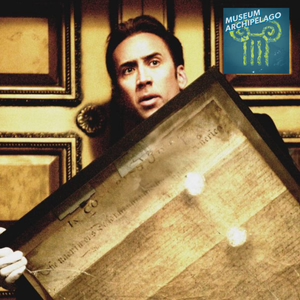
107. Crypto and Museums Part 1
Museum Archipelago
09/23/24 • 18 min
In November 2021, an extremely rare first printing of the U.S. Constitution was put up for auction at Sotheby's in New York, attracting a unique bidder: ConstitutionDAO, a decentralized autonomous organization. This group had formed just weeks earlier with the sole purpose of acquiring the Constitution – and would not have been possible without crypto technology.
While museums and crypto don't commonly coexist at the moment, they may increasingly intersect in the future. They actually address similar fundamental issues: trust and historical accuracy. Both can help answer the question: what really happened? To explore this overlap, we speak with Nik Honeysett, CEO of the Balboa Park Online Collaborative in San Diego, who helps trace the story of ConstitutionDAO's bid for the Constitution. We explore key crypto concepts like blockchains and smart contracts, and how they might apply to the wider museum world – particularly around questions of provenance and institutional trust.
Image: Nicolas Cage in 2004's National Treasure. Supporters of ConstitutionDAO drew parallels between his character's fictional theft of the Declaration of Independence and the DAO's real-life attempt to purchase the Constitution.
Topics and Notes
- 00:00 Intro
- 00:15 Auction of the U.S. Constitution
- 00:43 Constitution DAO
- 01:36 The Role of Governance Tokens
- 02:02 Nik Honeysett
- 02:45 Balboa Park Online Collaborative
- 04:29 Museums and Crypto
- 05:24 Blockchain and Provenance
- 07:40 Smart Contracts and Museum Governance
- 09:56 The Outcome of the Auction
- 11:58 Museums as Trustworthy
- 14:00 Museum Archipelago Ep. 39. Hans Sloane And The Origins Of The British Museum With James Delbourgo
- 16:41 Conclusion and Future of Crypto in Museums
- 17:44 Outro | Join Club Archipelago 🏖
Museum Archipelago is a tiny show guiding you through the rocky landscape of museums. Subscribe to the podcast via Apple Podcasts, Google Podcasts, Overcast, Spotify, or even email to never miss an episode.
DIVE DEEPER WITH CLUB ARCHIPELAGO 🏖️
Unlock exclusive museum insights and support independent museum media for just $2/month.Start with a 7-day free trial. Cancel anytime.
Your Club Archipelago membership includes:- 🎙️Access to a private podcast that guides you further behind the scenes of museums. Hear interviews, observations, and reviews that don't make it into the main show.
- 🎟️ Archipelago at the Movies, a bonus bad-movie podcast exclusively featuring movies and other pop culture that reflect the museum world back to us.
- ✨A warm feeling knowing you're helping make this show possible.
Transcript
Below is a transcript of Museum Archipelago episode 107. For more information on the people and ideas in the episode, refer to the links above.
View TranscriptIn November 2021 an extremely rare, first printing of the U.S. Constitution was available to buy at auction. While the item was special – only 13 copies existed according to the auction house – the bidders were the usual assortment of wealthy individuals.
Auctioneer: “And now let's begin the auction. Lot 1787. The United States Constitution. We’ll start the bidding here at 10 million dollars. 11 million.12 million ”
Except for one. Among the individuals trying to buy the Constitution was not an individual at all. It was a new kind of organization – a decentralized autonomous organization better known as a DAO. This organization, ConstitutionDAO, had formed just a few weeks earlier for this exact purpose – to buy the Constitution.
I remember the memes – backers of the project posted images of Nicolas Cage in 2004’s National Treasure, drawing parallels between his character’s fictional theft of the Declaration of Independence and this real-life atte...
1 Listener
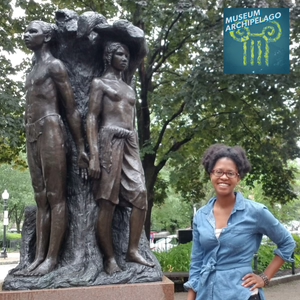
06/28/21 • 11 min
The deliberate exclusion of Black history and the history of slavery in the American South has been slow to reverse. But Jazz Dottin, creator and host of the Black Gems Unearthed YouTube channel says it can be just as slow in New England. Each video features Dottin somewhere in her home state of Massachusetts, often in front of a plaque or historical marker, presenting what’s missing, excluded, or downplayed.
The history discussed on Black Gems Unearthed has been left out by conventional museums, which are among the most trustworthy institutions in modern American life, according to the American Alliance of Museums. This trust may have more to do with power than truth-telling — and today, there are many different ways to build trust with an audience online. Shows like Dottin’s might point to where our new relationship with the authoritative voice is heading.
In this episode, Dottin describes how working as tour guide and creating travel itineraries influences her work today, how she came up with the idea for Black Gems Unearthed, and what the future holds.
Image: Jazz Dottin in front of Emancipation in Boston, Mass.
Topics and Notes
- 00:00 Intro
- 00:15 “Always Read The Plaque”
- 00:45 Jazz Dottin
- 01:00 Black Gems Unearthed
- 01:20 Hopkinton, Massachusetts
- 02:00 Exploring Black lives in MetroWest, MA in the 1700s - Black Gems Unearthed
- 02:26 Museum Archipelago 42. Freddi Williams Evans and Luther Gray Are Erecting Historic Markers on the Slave Trade in New Orleans
- 02:55 The Legacy of Slavery in New England
- 03:50 Working as a Tour Guide
- 05:35 The Idea for Black Gems Unearthed
- 08:21 Museums and Trustworthiness
- 09:36 Where The Name Comes From
- 10:10 Outro | Join Club Archipelago 🏖
- 11:39 What’s It Like Giving A Tour on A Segway?
Museum Archipelago is a tiny show guiding you through the rocky landscape of museums. Subscribe to the podcast via Apple Podcasts, Google Podcasts, Overcast, Spotify, or even email to never miss an episode.
Unlock Club Archipelago 🏖️
If you like episodes like this one, you’ll love Club Archipelago. It offers exclusive access to Museum Archipelago extras. It’s also a great way to support the show directly.Join the Club for just $2/month.
Your Club Archipelago membership includes:- Access to a private podcast that guides you further behind the scenes of museums. Hear interviews, observations, and reviews that don’t make it into the main show;
- Archipelago at the Movies 🎟️, a bonus bad-movie podcast exclusively featuring movies that take place at museums;
- Logo stickers, pins and other extras, mailed straight to your door;
- A warm feeling knowing you’re supporting the podcast.
Transcript
Below is a transcript of Museum Archipelago episode 94. For more information on the people and ideas in the episode, refer to the links above. View TranscriptWelcome to Museum Archipelago. I'm Ian Elsner. Museum Archipelago guides you through the rocky landscape of museums. Each episode is never longer than 15 minutes, so let's get started.
There’s a saying among history nerds: always read the plaque.
Roman Mars: “Always read the plaque.”
But of course, the plaques don’t tell the whole story. Maybe a better mantra would be “start by reading the plaque.”
Jazz Dottin: If I see plaques, I have to stop and read them. But with Black history, you know, there's not as many plaques, if any at all that are describing events and people and things that have happened in different areas across the country.
This is Jazz Dottin, creator and host of a new YouTube channel called Black Gems Unearthed.
Jazz Dottin: Hello, my name is Jazz Dottin and I am the host of Black Gems Unearthed, which is a YouTube series where I talk about Black history ar...
1 Listener

93. Bulgaria’s Narrow Gauge Railway Winds Through History. Ivan Pulevski Helped Turn One of Its Station Stops Into a Museum.
Museum Archipelago
06/07/21 • 11 min
In 1916, concerned that the remote Rhodope mountains would be hard to defend against foreign invaders, a young Bulgarian Kingdom decided to build a narrow gauge railway to connect villages and towns to the rest of the country. The Bulgarian King himself, Tsar Boris III, drove the first locomotive to the town of Belitsa to celebrate its opening. But the Septemvri - Dobrinishte Narrow Gauge Railway would far outlast the King and the Kingdom, the communist era that followed, and the rocky post-communst period.
Today, the railway is still a fixture of life in the region as a vital link to remote villages with no road access. But decades of neglect have left many stations crumbling. Train enthusiast Ivan Pulevski, a member of the organization “For The Narrow Gauge Railway,” helped found the House-Museum of the Narrow Gauge Railway in one of these abandoned stations. A sign on the building says the museum was built “for people, by people.”
In this episode, Pulevski describes the decision to build the museum using only volunteers, how to interpret multiple eras of Bulgarian history through the lens of a railway, and why they have had no plans to seek official museum accreditation in Bulgaria.
Topics and Notes
- 00:00 Intro
- 00:15 Winding Through History
- 00:50 Septemvri–Dobrinishte narrow-gauge line
- 01:10 Ivan Pulevski
- 01:33 Stoyan Mitov and the Engineering of the Railway
- 03:20 Tsar Boris III
- 03:50 The House-Museum of the Narrow Gauge Railway
- 04:40 No Electricity and No Water Supply
- 05:30 After The Collapse of the Communist Era
- 05:55 Organization "For The Narrow Gauge Railway"
- 06:32 Restoring the Building / Making the Museum
- 08:30 Bulgarian Museum Regulations
- 10:10 Outro | Join Club Archipelago 🏖
Museum Archipelago is a tiny show guiding you through the rocky landscape of museums. Subscribe to the podcast via Apple Podcasts, Google Podcasts, Overcast, Spotify, or even email to never miss an episode.
Unlock Club Archipelago 🏖️
If you like episodes like this one, you’ll love Club Archipelago. It offers exclusive access to Museum Archipelago extras. It’s also a great way to support the show directly.Join the Club for just $2/month.
Your Club Archipelago membership includes:- Access to a private podcast that guides you further behind the scenes of museums. Hear interviews, observations, and reviews that don’t make it into the main show;
- Archipelago at the Movies 🎟️, a bonus bad-movie podcast exclusively featuring movies that take place at museums;
- Logo stickers, pins and other extras, mailed straight to your door;
- A warm feeling knowing you’re supporting the podcast.
Transcript
Below is a transcript of Museum Archipelago episode 93. Museum Archipelago is produced for the ear, and only the audio of the episode is canonical. For more information on the people and ideas in the episode, refer to the links above. View TranscriptWelcome to Museum Archipelago. I'm Ian Elsner. Museum Archipelago guides you through the rocky landscape of museums. Each episode is never longer than 15 minutes, so let's get started.
The waiting room of Tsepina Station, south of the Bulgarian city of Septemvri in the Rhodope mountains, sits under the watchful eye of portraits of Vladimir Lenin and Georgi Dimitrov -- the revolutionary communitst leaders of Russia and Bulgaria respectively. But the communist period is only one of the eras of Bulgarian history the narrow gauge railway winds its way through.
Construction on the railway, and the station, began in 1920, when a young Bulgarian Kingdom was concerned that the remote Rhodope mountains would be hard to defend against foreign invaders. Today, the railway is still a fixture of life in the region. Each day, 10 times a day, a diesel train passes by the station.
Ivan Pulevski: Man...
1 Listener
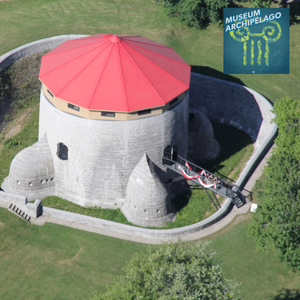
104. What Large Institutions Can Learn From Small Museums
Museum Archipelago
02/26/24 • 14 min
The Murney Tower Museum in Kingston, Ontario, Canada is a small museum. Open for only four months of the year and featuring only one full-time staff member, the museum is representative of the many small institutions that make up the majority of museums. With only a fraction of the resources of large institutions, this long tail distribution of small museums offers the full range of museum services: collection management, public programs, and curated exhibits.
Dr. Simge Erdogan-O'Connor has dedicated her studies to understanding the unique dynamics and challenges faced by small museums, and is also the Murney Tower Museum’s sole full-time employee.
In this episode, Dr. Erdogan-O'Connor describes the operation of The Murney Tower Museum, discusses the economic models of small museums, and muses on what small museums can teach larger ones.
Image: Murney Tower Museum
Topics and Notes
- 00:00 Intro
- 00:15 Understanding the Landscape of Small Museums
- 02:38 Dr. Simge Erdogan-O'Connor
- 03:00 Murney Tower Museum
- 08:29 Overcoming Challenges with Digital Solutions
- 09:46 What Big Institutions Can Learn from Small Museums
- 09:54 The Power of Local Connections in Small Museums
- 13:20 Outro | Join Club Archipelago 🏖
Museum Archipelago is a tiny show guiding you through the rocky landscape of museums. Subscribe to the podcast via Apple Podcasts, Google Podcasts, Overcast, Spotify, or even email to never miss an episode.
Support Museum Archipelago🏖️
Club Archipelago offers exclusive access to Museum Archipelago extras. It’s also a great way to support the show directly.Join the Club for just $2/month.
Your Club Archipelago membership includes:- Access to a private podcast that guides you further behind the scenes of museums. Hear interviews, observations, and reviews that don’t make it into the main show;
- Archipelago at the Movies 🎟️, a bonus bad-movie podcast exclusively featuring movies that take place at museums;
- Logo stickers, pins and other extras, mailed straight to your door;
- A warm feeling knowing you’re supporting the podcast.
Transcript
Below is a transcript of Museum Archipelago episode 104. For more information on the people and ideas in the episode, refer to the links above.
View TranscriptWelcome to Museum Archipelago. I'm Ian Elsner.
Museum Archipelago guides you through the rocky landscape of museums. Each episode is rarely longer than 15 minutes, so let's get started.
Let’s say you sorted every museum on earth in order by the number of yearly visitors.
At one end, with yearly visitor numbers in the millions, would be large, recognizable institutions – places like the British Museum in London. There’s a cluster of these big institutions, but as you go further along the ordered list of museums, the visitor numbers start to drop.
At some point during these declining visitor numbers, you reach small museums. Exactly where in the order you first reach a small museum doesn’t really matter – one definition of small museums from the American Association of State and Local History is simply: “If you think you’re small, you’re small.” You could do the same sort by number of staff members or by operating budget – the effect would be more or less the same. The point is that once you reach the threshold where small museums begin, you still have the vast, vast majority of museums to go.
Simge Erdogan-O'Connor: You just realize how many small museums are there in the world. Unbelievable numbers, right? They're everywhere and they hold such an important space in local cultural landscapes. Even if I dare to say more than large institutions.
The sorting exercise illustrates a long tail effect – each small museum, while attracting fewer visitors individually, collectively hosts an enormous number of visitors. There’s just so many of them. ...
1 Listener
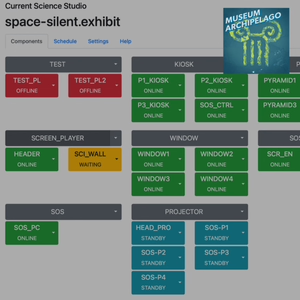
105. Building a Better Visitor Experience with Open Source Software
Museum Archipelago
04/15/24 • 14 min
While working at the Fort Worth Museum of Science and History during the pandemic, Dr. Morgan Rehnberg recognized the institution's limited capacity to develop new digitals exhibits with the proprietary solutions that are common in big museums. This challenge led Rehnberg to start work on Exhibitera, a free, open-source suite of software tools tailored for museum exhibit control that took advantage of the touch screens and computers that the museum already had.
Today, as Vice President of Exhibits and Experiences at the Adventure Science Center in Nashville, Rehnberg continues to refine and expand Exhibitera, which he previously called Constellation. The software is crafted to enable institutions to independently create, manage, and update their interactive exhibits, even between infrequent retrofits. The overarching goal is to make sure that smaller museum’s aren’t “left in the 20th century” or reliant on costly bespoke interactive software solutions.
Exhibitera is used in Fort Worth and Nashville and available to download. In this episode, Rehnberg shares his journey of creating Exhibitera to tackle his own issues, only to discover its broader applicability to numerous museums.
Image: Screenshot from a gallery control panel in Exhibitera
Topics and Notes
- 00:00 Intro
- 00:15 Computer Interactives in Museums
- 01:00 Dr. Morgan Rehnberg
- 01:40 Rehnberg on Cassini
- 02:14 The Adventure Science Center in Nashville
- 03:30 A Summary of Computers in Museums
- 05:00 Solving Your Own Problems
- 06:30 Exhibitera
- 07:45 “A classroom teacher should be able to create a museum exhibit”
- 08:30 Built-In Multi-Language Support
- 09:30 Open Source Exhibit Management
- 10:30 Why Open Source?
- 12:30 Go Try Exhibitera for Your Museum
- 13:20 Outro | Join Club Archipelago 🏖
Museum Archipelago is a tiny show guiding you through the rocky landscape of museums. Subscribe to the podcast via Apple Podcasts, Google Podcasts, Overcast, Spotify, or even email to never miss an episode.
Support Museum Archipelago🏖️
Club Archipelago offers exclusive access to Museum Archipelago extras. It’s also a great way to support the show directly.Join the Club for just $2/month.
Your Club Archipelago membership includes:- Access to a private podcast that guides you further behind the scenes of museums. Hear interviews, observations, and reviews that don’t make it into the main show;
- Archipelago at the Movies 🎟️, a bonus bad-movie podcast exclusively featuring movies that take place at museums;
- Logo stickers, pins and other extras, mailed straight to your door;
- A warm feeling knowing you’re supporting the podcast.
Transcript
Below is a transcript of Museum Archipelago episode 105. For more information on the people and ideas in the episode, refer to the links above.
View TranscriptWelcome to Museum Archipelago. I'm Ian Elsner. Museum Archipelago guides you through the rocky landscape of museums. Each episode is rarely longer than 15 minutes, so let's get started.
I’ve spent most of my career building interactive exhibits for museums. These are all visitor-facing: touchscreens for pulling up information or playing games based on the science content, projection walls for displaying moving infographics, and digital signage for rotating through ticket prices or special events.
Dr. Morgan Rehnberg: Well I think most computer interactives in museums are pretty bad. And I don't think that's ...
1 Listener
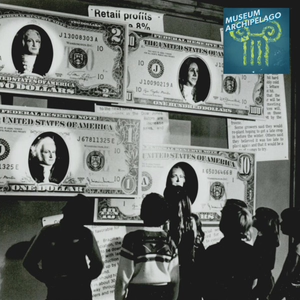
109. The Rise and Fall of Enterprise Square, USA
Museum Archipelago
02/24/25 • 15 min
For the last few decades of the 20th century, if you visited Oklahoma City, Oklahoma, you could have been serenaded by a barbershop quartet of audio-animatronic portraits of America's founders as framed on U.S. currency. This was one of the many exhibits at Enterprise Square, USA, a high-tech museum dedicated to teaching children about Free Market Economics. The museum, which found itself out of money almost before it opened, shut down in 1999.
Barrett Huddleston first encountered these exhibits as a wide-eyed elementary school student in the 1980s, mesmerized by the talking puppets, giant electronic heads, and interactive displays that taught how regulation stifled freedom. Years later, he returned as a tour guide during the museum's final days, maintaining those same animatronics with duct tape and wire cutters, and occasionally being squeezed inside the two-dollar bill to repair Thomas Jefferson.
He joins us to explore this collision of education, ideology, and visitor experience, and how the former museum shapes his own approach to teaching children today.
Cover Image: Children watch audio-animatronic portraits of America's founders, as framed on U.S. currency, sing a song about freedom. [Photograph 2012.201.B0957.0912] hosted by The Gateway to Oklahoma History
Topics and Notes
- 00:00 Intro
- 00:15 Buzludzha Again
- 00:46 Enterprise Square, USA
- 01:32 Barrett Huddleston
- 02:05 The Origins and Purpose of Enterprise Square
- 03:09 The Boom and Bust of Oklahoma's Economy
- 05:47 The Disney Connection and Animatronics
- 07:54 The Decline of Enterprise Square
- 11:42 Huddleston's Reflections on Education
- 13:41 Outro | Join Club Archipelago 🏖
DIVE DEEPER WITH CLUB ARCHIPELAGO 🏖️
Unlock exclusive museum insights and support independent museum media for just $2/month.Start with a 7-day free trial. Cancel anytime.
Your Club Archipelago membership includes:- 🎙️Access to a private podcast that guides you further behind the scenes of museums. Hear interviews, observations, and reviews that don't make it into the main show.
- 🎟️ Archipelago at the Movies, a bonus bad-movie podcast exclusively featuring movies and other pop culture that reflect the museum world back to us.
- ✨A warm feeling knowing you're helping make this show possible.
Transcript
Below is a transcript of Museum Archipelago episode 109. For more information on the people and ideas in the episode, refer to the links above.
View TranscriptWelcome to Museum Archipelago. I'm Ian Elsner. Museum archipelago guides you through the rocky landscape of museums. Each episode is rarely longer than 15 minutes. So let's get started.
Buzludzha comes up a lot on Museum Archipelago. The monument was built in 1981 to look like a futuristic flying saucer parched high on Bulgarian mountains. Every detail of the visitor experience was designed to impress, to show how Bulgarian communism was the way of the future. Once inside, visitors were treated to an immersive light show, where the mosaics of Marx and Lenin and Bulgarian partisan battles were illuminated at dramatic moments during a pre-recorded narration.
But within a year of Buzludzha welcoming its first guests, all the way across the world in Oklahoma City, Oklahoma, another museum opened to promote the exact opposite message. And it even had its own flying saucer connection.
Barrett Huddleston: The framing device of the museum is you have these two alien puppets that crash down in Oklahoma City, Oklahoma, and they need to get fuel for their spaceship so they can go back. I saw these animatronic puppets and I was like, oh, well this is just like Disney World, except they're talking about having to commodify their space technology so they can buy gold to put in their spaceship so they can get back to their planet or whatever.
This is Barrett Huddleston, who first visited Enterprise Square, USA as an elementary school student in the mid-1980s, and later worked there as a tour guide.
Barrett Huddleston: Hi, my name is Barrett Huddleston. I am an educational enrichment provider. I own a business called Mad Science of Central Oklahoma and Finer Arts of Oklahoma. I travel all over my state and a few others, delivering STEAM based workshops and assemblies to elementary school students. But In this instance, I also worked as a tour guide for Enterprise Square USA f...
1 Listener
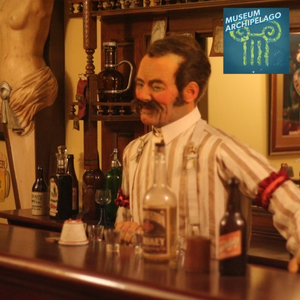
106. Last Call on 'The Streets of Old Milwaukee'
Museum Archipelago
07/29/24 • 18 min
I remember visiting – and loving – The Streets of Old Milwaukee exhibit at the Milwaukee Public Museum (MPM) as a child. Opened in 1965, it’s an immersive space with cobblestone streets and perfect lighting that evokes a fall evening in turn-of-the-20th-century Milwaukee. The visitor experience isn’t peering into a diorama, it’s moving through a diorama, complete with lifelike human figures.
And I’m not the only one with fond memories. When the museum announced that the exhibit would not move over to the planned new museum down the street, the public reacted negatively. Dr. Ellen Censky, president and CEO of the MPM, describes the reasons why the museum can’t – and most interestingly shouldn’t – move The Streets of Old Milwaukee exhibit. It’s a story involving cherished memories, the distinction between collections and exhibits which isn’t always at the top of visitors’ minds, and public trust.
In this episode, we explore why the Milwaukee Public Museum decided to move (it’s the fourth relocation in its history) and Milwaukee Revealed, the planned new immersive gallery that will be the spiritual successor to The Streets of Old Milwaukee, which will cover a much larger swath of the city’s history. Plus, we get into the meta question of whether museums are outside of the history they are tasked with preserving.
Image: Bartender in Streets of Old Milwaukee at Milwaukee Public Museum. Photo by Flickr user JeffChristiansen
Topics and Notes
- 00:00 Intro
- 00:15 The Streets of Old Milwaukee’s 2015 Renovation
- 01:17 The Streets of Old Milwaukee’s Visitor Experience
- 03:40 Dr. Ellen Censky, President and CEO of the Milwaukee Public Museum
- 04:10 The Decision to Move the Museum
- 04:45 AAM Accreditation
- 06:21 The Current Museum
- 07:42 Funding the New Museum
- 08:55 Milwaukee Revealed
- 11:14 Milwaukee WTMJ4 from January 11th, 2023
- 11:40 The distinction between collections and exhibits
- 12:45 “We owe future museum goers the opportunity to see something different”
- 13:44 Local Talk Radio Coverage
- 14:07 Museum Designers
- 15:29 Closing Thoughts and the “Next Best Thing”
- 17:00 Outro | Join Club Archipelago 🏖
Museum Archipelago is a tiny show guiding you through the rocky landscape of museums. Subscribe to the podcast via Apple Podcasts, Google Podcasts, Overcast, Spotify, or even email to never miss an episode.
DIVE DEEPER WITH CLUB ARCHIPELAGO 🏖️
Unlock exclusive museum insights and support independent museum media for just $2/month.Start with a 7-day free trial. Cancel anytime.
Your Club Archipelago membership includes:- 🎙️Access to a private podcast that guides you further behind the scenes of museums. Hear interviews, observations, and reviews that don't make it into the main show.
- 🎟️Archipelago at the Movies a bonus bad-movie podcast exclusively featuring movies and other pop culture that reflect the museum world back to us.
- ✨A warm feeling, knowing you're helping make this show possible.
Transcript
Below is a transcript of Museum Archipelago episode 106. For more information on the people and ideas in the episode, refer to the links above.
View TranscriptI first learned about the impending closure of the popular The Streets of Old Milwaukee exhibit at the Milwaukee Public Museum, or MPM, back in 2015. The news came in the form of an email from a family member who had lived in the Milwaukee area her whole life. It was only a year after I started working in the ...
1 Listener
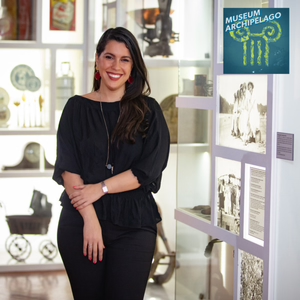
98. At the Panama Canal Museum, Ana Elizabeth González Creates a Global Connection Point
Museum Archipelago
02/14/22 • 13 min
When Ana Elizabeth González was growing up in Panama, the history she learned about the Panama Canal in school told a narrow story about the engineering feat of the Canal’s construction by the United States. This public history reflected the politics of Panama and control over the Canal.
Today, González is executive Director of the Panama Canal Museum, and she’s determined to use the Canal and the struggles over its authority to tell a broader story about the history of Panama – one centered around Panama as a point of connection from pre-Colonial times to the present day.
In this episode, González describes the geographic destiny of the Isthmus of Panama, how America’s ownership of the Canal physically divided the country, and how her team is developing galleries covering Panama’s recent history.
Topics and Notes
- 00:00 Intro
- 00:15 The Panama Canal's Politically Sensitive History
- 01:20 Ana Elizabeth González, Executive Director of the Panama Canal Museum
- 01:35 Opening of the Panama Canal Museum in 1997
- 02:44 Making the Museum About Panama, Not Just The Canal
- 03:10 Geography is Destiny
- 03:30 The Isthmus of Panama as a Point of Connection
- 04:20 A Brief History
- 04:50 French Attempt at a Canal
- 05:10 Treaty of Hay–Bunau-Varilla
- 06:30 Construction of the Canal
- 07:00 "Gold Roll" and "Silver Roll"
- 08:00 Martyrs' Day
- 08:50 Work In Progress: Galleries of Panama's Recent History
- 09:10 Panama's Recent History, Briefly
- 11:10 The Museum's Future
- 11:15 Museum Archipelago's 100th Episode Party 🎉
- 12:20 Outro | Join Club Archipelago 🏖
Museum Archipelago is a tiny show guiding you through the rocky landscape of museums. Subscribe to the podcast via Apple Podcasts, Google Podcasts, Overcast, Spotify, or even email to never miss an episode.
Support Museum Archipelago🏖️
Club Archipelago offers exclusive access to Museum Archipelago extras. It’s also a great way to support the show directly.Join the Club for just $2/month.
Your Club Archipelago membership includes:- Access to a private podcast that guides you further behind the scenes of museums. Hear interviews, observations, and reviews that don’t make it into the main show;
- Archipelago at the Movies 🎟️, a bonus bad-movie podcast exclusively featuring movies that take place at museums;
- Logo stickers, pins and other extras, mailed straight to your door;
- A warm feeling knowing you’re supporting the podcast.
Transcript
Below is a transcript of Museum Archipelago episode 98. For more information on the people and ideas in the episode, refer to the links above. View TranscriptWelcome to Museum Archipelago. I'm Ian Elsner. Museum Archipelago guides you through the rocky landscape of museums. Each episode is never longer than 15 minutes, so let's get started.
When Ana Elizabeth González was growing up in Panama, the history she learned in school about the Panama Canal told a narrow story.
Ana Elizabeth González: The history of the canal that was told here was told in a way that was very politically sensitive at the time. So it didn't want to ruffle any feathers.. it's mentioned in schools, but not in depth.
Up until 1979, the United States fully controlled the Panama Canal and a 5 mile zone on either side, and until 1999, the United States jointly controlled the Canal with Panama. The presence of the United States, and the politics of the Canal, meant that the safest story to tell was one that was mostly focused on the technological feat of building it.
Ana Elizabeth González: The history was very carefully constructed so that it praised the engineering feat of the United States, but it completely ignored the fact that Panama was home to people from 97 different countries...
1 Listener
Show more best episodes

Show more best episodes
FAQ
How many episodes does Museum Archipelago have?
Museum Archipelago currently has 110 episodes available.
What topics does Museum Archipelago cover?
The podcast is about Places & Travel, Society & Culture, Design, Podcasts and Arts.
What is the most popular episode on Museum Archipelago?
The episode title '99. Museums in Video Games' is the most popular.
What is the average episode length on Museum Archipelago?
The average episode length on Museum Archipelago is 12 minutes.
How often are episodes of Museum Archipelago released?
Episodes of Museum Archipelago are typically released every 20 days, 23 hours.
When was the first episode of Museum Archipelago?
The first episode of Museum Archipelago was released on Apr 3, 2015.
Show more FAQ

Show more FAQ